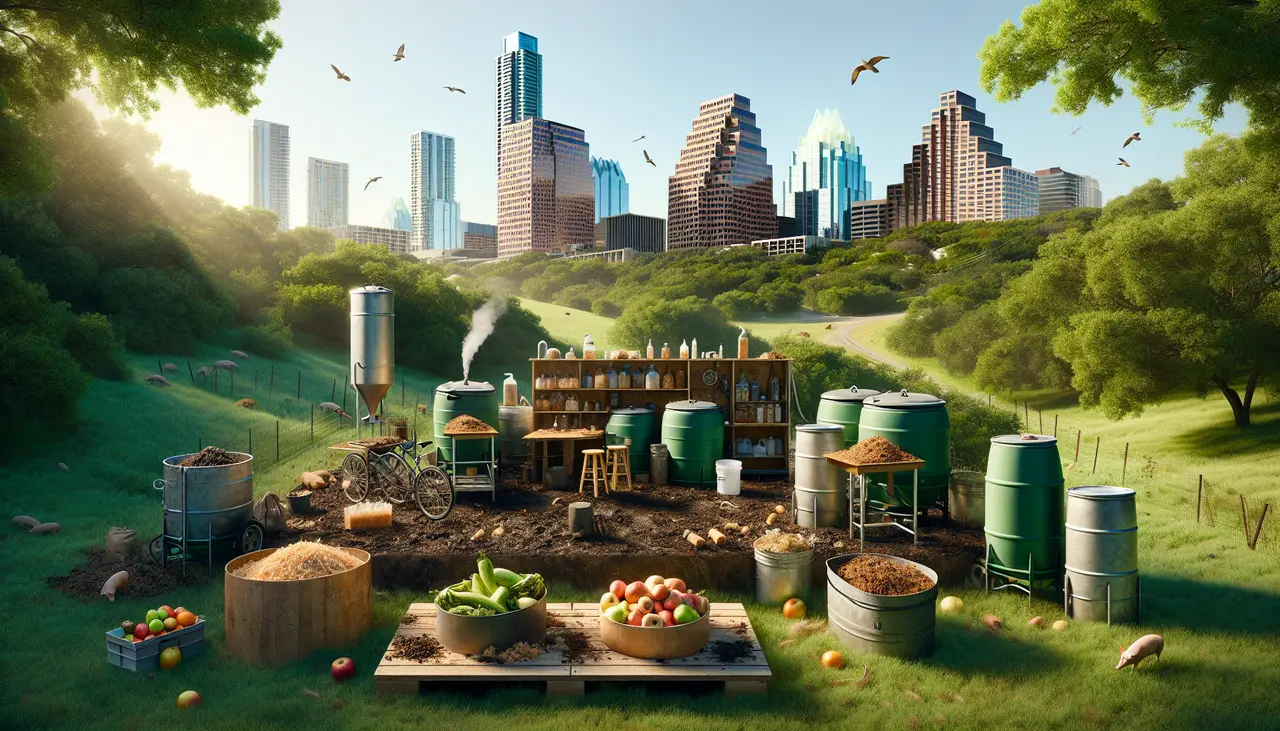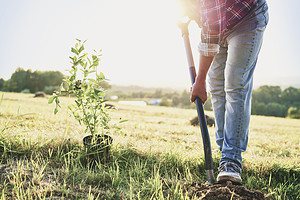Introduction to Human Composting: An Eco-Friendly Choice
Human composting, known officially as natural organic reduction, is catching on as a green goodbye to traditional funeral practices. Picture this: instead of using up valuable land for burial or releasing harmful emissions through cremation, your body returns to the earth, quite literally. This process turns human remains into nutrient-rich soil, which can then nourish new life, be it a garden, a tree, or restoring degraded land. It’s an eco-friendly choice for those thinking about the environmental footprint they leave behind. Austin, with its forward-thinking and eco-conscious community, is leading the charge. This method not only honors the circle of life but also tackles the issue of space that traditional burials face. By choosing human composting, you’re part of a growing trend that opts for sustainability over convention, making a final statement of care for the planet.
The Concept of Human Composting Explained
Human composting, also known as recomposition or natural organic reduction, is a burial alternative that’s catching attention for its green credentials. Instead of burning like in cremation or taking up land space like traditional burials, human composting turns a body into soil. It’s simple yet revolutionary. The body is placed in a special vessel along with natural materials like straw, wood chips, and alfalfa. Over several weeks, with the help of oxygen and controlled conditions, microbes break everything down. What you get at the end is nutrient-rich soil. This soil can nourish plant life, reconnecting us to the earth in a very real way. Plus, it cuts down on carbon emissions making it a win for the planet too. It’s a respectful, eco-conscious choice for those thinking ahead.
Environmental Benefits of Opting for Human Composting
Choosing human composting over traditional burial or cremation methods significantly lessens our environmental footprint. First off, it sidesteps the use of embalming chemicals, which can seep into the earth, harming soil and water ecosystems. Secondly, human composting doesn’t require the land space that burial plots do, reducing the demand for cemetery expansions that encroach on natural habitats. Plus, it foregoes the energy-intensive process of cremation, cutting down on carbon emissions. By transforming human remains into nutrient-rich soil, human composting supports plant growth, contributing to reforestation and the restoration of natural areas. This method turns the end of life into an opportunity to nourish the planet, making it a truly eco-friendly choice.
How Human Composting Works: The Process
Human composting turns our bodies into soil after we pass away. Instead of using land for graves or releasing carbon through cremation, human composting is eco-friendly. Here’s how it works. First, your body is placed in a special vessel with organic materials like wood chips, alfalfa, and straw. These materials help break down your body naturally. Over about 30 days, with the help of oxygen and careful monitoring, your body turns into nutrient-rich soil. This process is scientifically called “natural organic reduction.” Finally, the resulting soil can be returned to the earth, nourishing the land. It’s a way of giving back to nature and reducing our environmental footprint.
Austin’s Pioneering Role in Eco-Friendly Funeral Practices
Austin is leading the way in changing how we think about our final goodbye. This city is a pioneer in human composting, an eco-friendly alternative to traditional burial or cremation. Instead of using up precious land or emitting carbon into the atmosphere, human composting turns our remains into nutrient-rich soil. This process gives back to the earth and supports new life. Austin’s stance on human composting reflects a broader commitment to sustainability and respect for the natural world. By choosing this green burial method, residents can leave a legacy that benefits the planet. It’s a bold step forward, showing that even in death, we can contribute to the health of our environment.
Legal Landscape: Human Composting Legislation in Austin and Beyond
In Texas, human composting, also known as natural organic reduction, isn’t straightforwardly regulated. Unlike traditional burials and cremations, which have clear laws, human composting sits in a legal gray area. In Austin, and Texas at large, lawmakers haven’t yet passed specific legislation that either permits or bans this eco-friendly burial method. This means there’s no official go-ahead for those interested in turning their loved ones into nutrient-rich soil. However, the tide is changing. States like Washington, Colorado, and Oregon have led the way by legalizing human composting, showing a growing acceptance towards eco-friendly funeral practices. This shift could signal a future where Texas might also adopt similar laws, creating a clearer path for those in Austin and beyond to choose human composting as a green burial option. But for now, if you’re in Austin and looking into human composting, it’s a wait-and-see game, closely monitoring legislative changes.
Comparing Traditional Funeral Methods with Human Composting
Traditional funerals, with burials or cremations, have long been the norm. But let’s face it, they’re pricey and not exactly kind to our planet. Burials often involve embalming with chemicals, which can seep into the earth. Cremations? They burn a lot of energy and release carbon into the atmosphere. Now, enter human composting. A greener choice that’s gaining ground, especially in eco-conscious places like Austin.
Human composting, or “natural organic reduction,” turns our bodies into soil in just a few weeks. It skips the harmful chemicals and the massive energy use. Plus, it gives back to the earth by creating nutrient-rich soil that can help plants grow.
So, cost-wise, traditional burials can really dig into your savings. We’re talking upwards of $7,000 when you add in a casket, burial plot, and headstone. Cremations are a bit lighter on the wallet but still hover around (6,000 to )7,000 when you factor in service fees.
On the flip side, human composting services are not only eco-friendlier but also lighter on the budget. In Austin, the price for human composting can range from (4,000 to )5,000. This covers the composting process and returns a portion of the soil to the family. The rest? It goes to conservation lands or gardens, making a lasting, green legacy.
In summary, choosing human composting over traditional methods could save you some cash while doing right by Mother Nature. It’s a win-win for your wallet and the planet.
The Cost of Choosing Human Composting in Austin
In Austin, going green with your farewell costs more than a traditional burial, but it’s a win for the planet. Human composting usually ranges between (4,000 and )7,000. This number might make you pause, but it includes everything from the pick-up of the body to the final transformation into nutrient-rich soil. When you compare this to conventional burials that can go as high as $9,000 or more, it starts looking like a reasonable, earth-friendly alternative. The price tag also covers the use of facilities that ensure the process respects both legal and environmental standards. Plus, think about this: you’re leaving behind a legacy that contributes to the earth’s wellbeing. Yes, it’s a bit of an upfront cost. However, the impact? Everlasting.
Public Perception and Cultural Acceptance in Austin
In Austin, a city known for its progressive thinking and green initiatives, human composting is gaining traction but also facing its share of skepticism. Most folks here appreciate innovative ways to reduce our environmental footprint, and human composting is seen as a step in the right direction. However, it’s not without its critics. Some residents, influenced by traditional burial practices and religious beliefs, view the idea with caution and, at times, outright resistance.
Despite the pushback, conversations around human composting are opening up. Community meetings, workshops, and city forums are increasingly discussing its benefits, focusing on how it returns nutrients to the earth and cuts down on carbon emissions compared to conventional burial or cremation methods. As more Texans learn about the process’s environmental perks, the cultural acceptance is slowly but steadily growing.
Remember, changing deep-seated cultural norms and beliefs takes time. In Austin, those advocating for human composting are working hard to educate and inform, aiming to transform skepticism into acceptance. They emphasize respect for personal beliefs and aim for a middle ground where people at least understand the ecological benefits, even if they choose traditional burial methods for themselves.
Conclusion: The Future of Funerals and Sustainability in Austin
Austin is setting the stage for a future where funerals aren’t just a way to say goodbye, but also a step towards healing our planet. Human composting, an innovative practice that turns our bodies back into soil, is leading this change. It’s a stark shift from traditional burials and cremations that harm our environment. With human composting, our final act can nourish the earth, giving life to new plants and trees. This forward-thinking approach aligns perfectly with Austin’s eco-conscious spirit, promising a sustainable option for those looking ahead. As more Austinites opt for this green alternative, it sets a powerful example for cities worldwide. The next time we think about legacies, let’s consider how our choices impact the planet. In Austin, the future of funerals is green, and it’s a future we can all be proud of.







